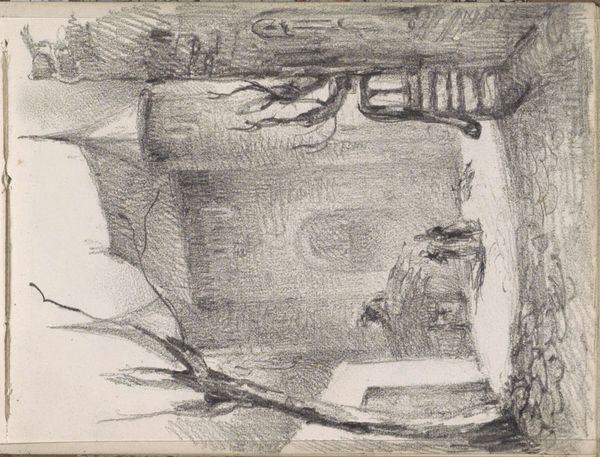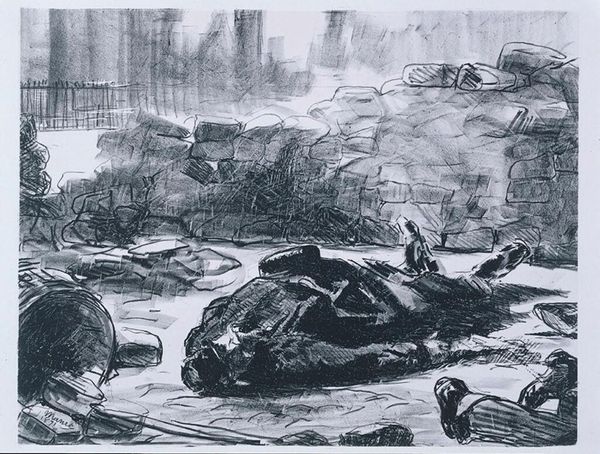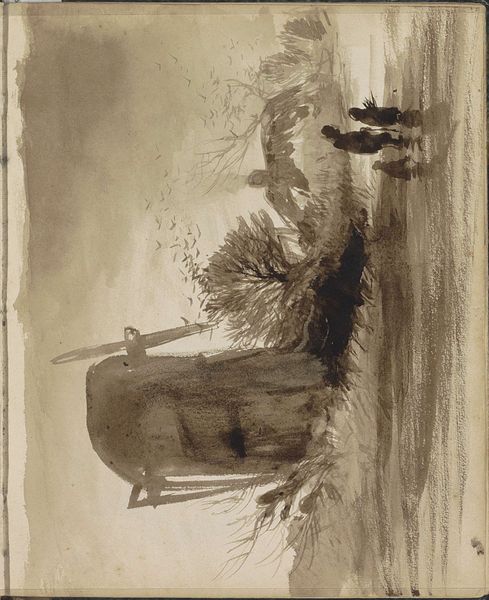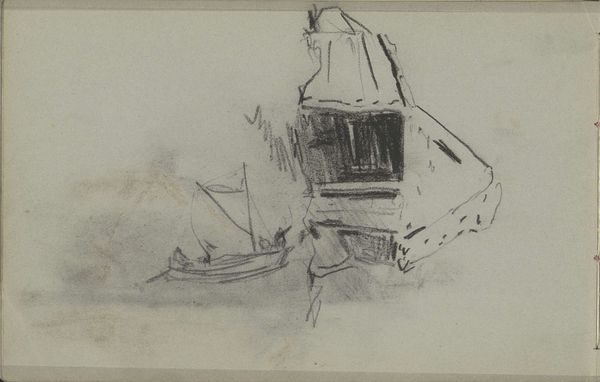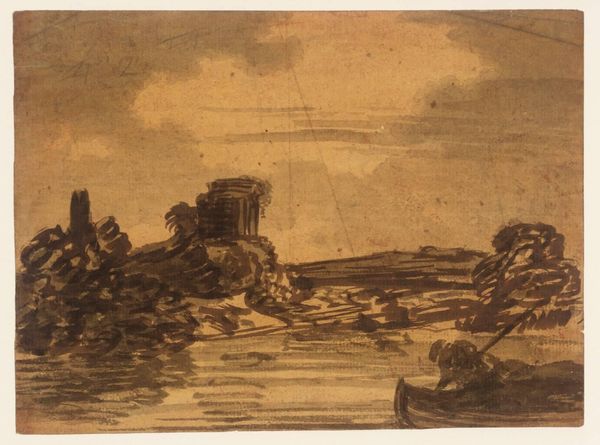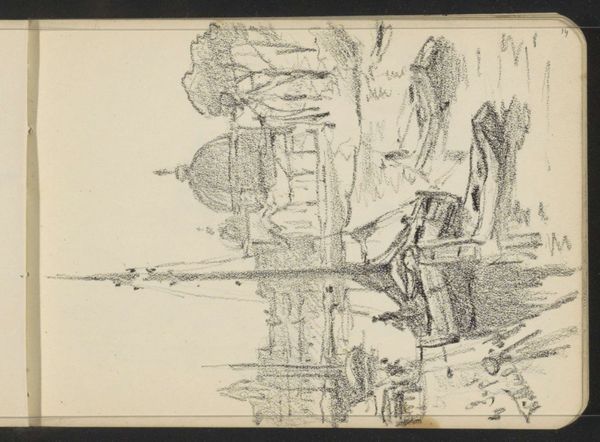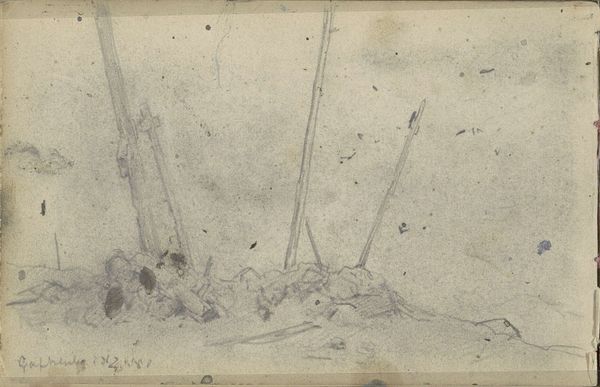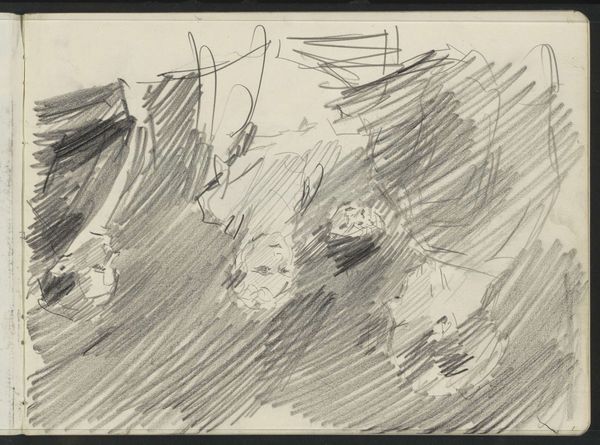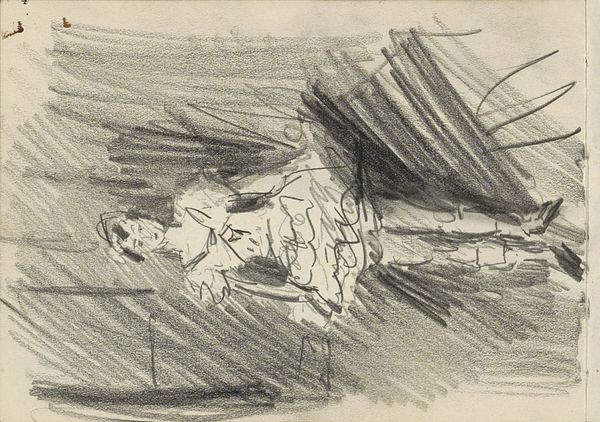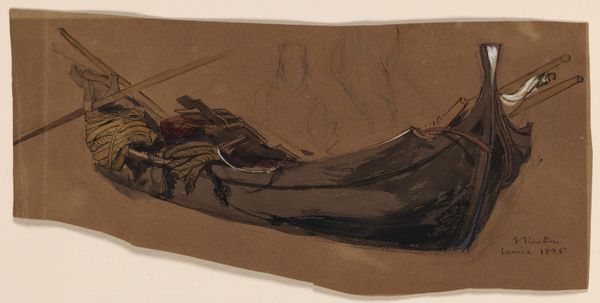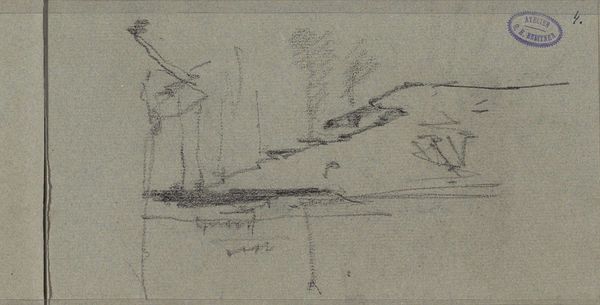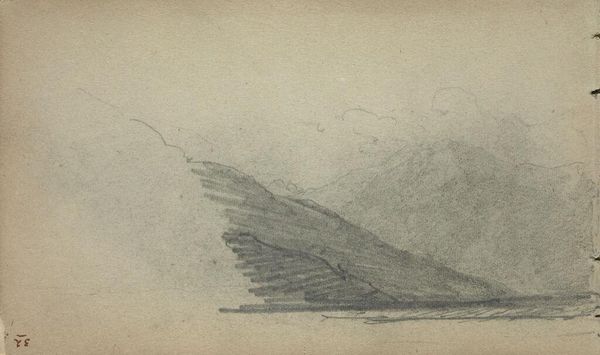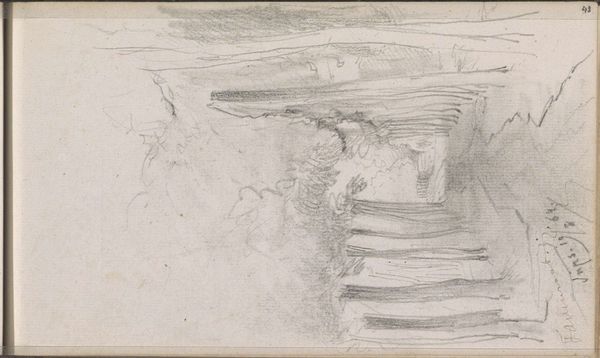
Dimensions: support: 269 x 410 mm
Copyright: CC-BY-NC-ND 4.0 DEED, Photo: Tate
Editor: So, this is William James Müller's "Study of Pines, Rheinwald," created in 1835, with ink on paper. It feels incredibly stark, almost desolate. What do you make of it? Curator: This work encapsulates the Romantic era's complex relationship with nature. Consider the historical context: industrialization was rapidly changing the landscape. Editor: In what way? Curator: Artists like Müller were grappling with themes of environmental impact and humankind’s place within the natural world. Do you see how the dark, almost violent brushstrokes depict the pines? Editor: Yes, and the goats in the left corner. They almost seem an afterthought! Curator: Precisely. The painting is a visual argument, lamenting a lost harmony. It makes me wonder, how do we represent nature now, in the face of climate change? Editor: That’s a powerful point. It gives the work a new layer of meaning for me. Curator: Indeed. Art constantly prompts us to see the past through the lens of the present, and vice versa.
